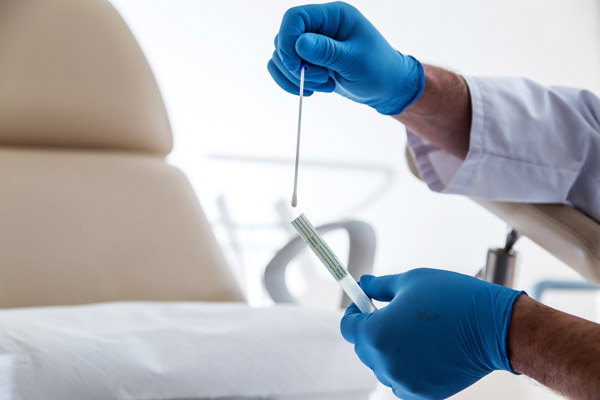Urinary IncontinenceTomball, TX
Many of the systems in the body are run or affected by hormones. Changes in hormones due to age, pregnancy or medication can cause a variety of necessary but uncomfortable changes. As OBGYNs, we understand how urinary incontinence can make life incredibly uncomfortable and difficult. You do not need to wait weeks to see a general physician who does not have experience with this specific issue.
We can help ensure you get the care you need to live life without being in constant fear of urinary incontinence. With our experience, tools and knowledge, we can customize the treatment to your needs.
Inconvenient, Uncomfortable and Difficult to Manage
Urinary incontinence is uncontrollable urination that can occur at any point during the day. It can cause a small amount of urine to leak out or can cause such a sudden urge to urinate that the patient cannot reach a bathroom in time. While this condition is most common in adults over the age of 40, pregnant women can also develop this condition.
Symptoms of urinary incontinence to keep an eye out for include:
- Involuntary release of urine when straining the bladder, sneezing, coughing, laughing or lifting a heavy object
- Needing to suddenly urinate during the night
- Slow dribbling of urine throughout the day
- Inability to complete physical action to urinate
- Having an infection or disorder that can cause urinary incontinence
While these are only a few of the main types of urinary incontinence, many people may not seek direct medical care until the condition gets worse. If there is only one instance of incontinence, it is probably not too serious of a concern. If the incontinence occurs several times or on a regular basis, then it is crucial to seek treatment at our practice.
Incontinence Surgery
There are multiple types of surgical procedures for the more serious cases to help treat urinary incontinence. The type of surgery will depend entirely on the type of urinary incontinence the patient has.
Sling Procedure
The sling procedure involves applying strips of the patient’s body tissue or synthetic material to create a sling around the urethra. This procedure helps the area around the urethra that has thickened muscle at the point where the bladder connects to the urethra. The goal is to use the sling to keep the urethra closed, especially when the patient places a strain on the bladder when coughing or sneezing.
Bladder Neck Suspension
The bladder neck suspension procedure provides support to the urethra and bladder neck, where both meet. In order to complete this procedure, the patient will be under general anesthesia. By providing support, it can help to prevent urinary incontinence.
Prolapse Surgery
If the patient is struggling with mixed incontinence, multiple types of urinary incontinence issues, and a pelvic organ prolapse, then a unique surgical approach may be necessary. This procedure may also include the sling procedure to help lift the bladder up.
Along with surgery, there are other options the patient can consider using at home. However, we will need to determine which treatment works best through a consultation.
Seek Treatment to Regain Control
Patients may not realize that urinary incontinence can result from childbirth. During childbirth, vaginal delivery can weaken the muscles used for bladder control that can cause a prolapsed pelvic floor to develop. When this happens, it can lead to stress incontinence that makes it difficult for the bladder to hold any urine in.
At-Home Treatment Methods
Treatment can vary per patient, but will most likely start with learning to practice timed voiding and bladder training techniques. Time voiding is a technique in which the patient keeps track of the times he or she urinates and when any leaks occur.
Bladder training will involve increasing the time before going to the bathroom. The patient waits until he or she has to use the restroom and will then slowly increase the time between each bathroom visit.
Different Devices to Help
A pessary device is a medical device that helps to stop urinary incontinence from occurring. It is a stiff ring the patient inserts into the vagina and proceeds to wear all day. It does this by helping to hold up the bladder and prevent leakage.
Another type of insert is small and similar to the structure of a tampon that the patient inserts into the urethra before an activity such as running or a sport that can cause incontinence. This device is disposable and acts as plugs that the patient must remove before urinating.
Finding the Treatment Option for You
If you see us on a regular basis, we will already have the information on your medical history to customize the treatment. On top of that, the sooner you treat urinary incontinence, the sooner you can return to your regular lifestyle. The first step is to contact us and schedule an appointment.
Contact Us
Donald Eckhardt Jr., M.D. , Kari Eckhardt W.H.N.P., C.N.M. is located at
13635 Michel Road
Tomball, TX
77375.





